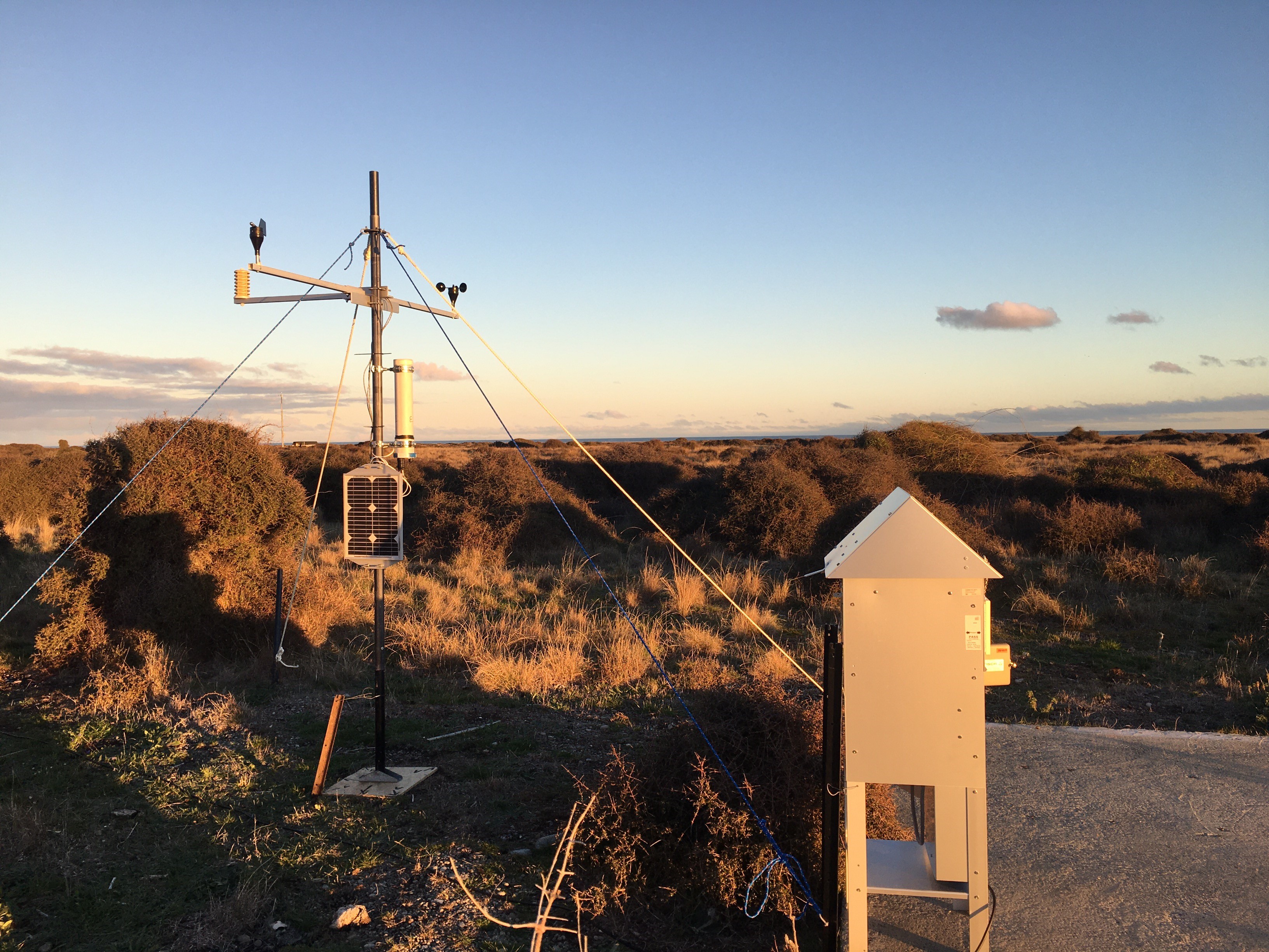Media release
From:
Aotearoa New Zealand scientists recently found that microplastics – which are in our rivers, oceans, and land – are also in the air we breathe. Now local scientists have discovered airborne microplastic pollution is likely to directly affect climate change.
A new modelling study led by University of Canterbury atmospheric chemist Dr Laura Revell is the first to investigate the effects of airborne microplastics on climate.
Dr Revell – along with University of Canterbury colleagues Dr Peter Kuma and Professor Sally Gaw, and MacDiarmid Institute researchers Professor Eric Le Ru and Dr Walter Somerville at Victoria University Wellington – has published the findings in the prestigious scientific journal Nature (21 October NZ time), titled ‘Direct radiative effects of airborne microplastics’.
“We studied how microplastic fragments and fibres – two types of microplastics commonly found in the atmosphere – interact with light, and used this information in a global climate model to calculate the overall impact of airborne microplastics on Earth’s climate,” Dr Revell explains.
“Based on our assumptions, which were drawn from the limited number of airborne microplastics studies to date, the impact of airborne microplastics on climate is currently small, as expected.”
What are microplastics?
Microplastics are very small plastic fragments or fibres produced from the breakdown of larger plastics. Airborne microplastics are transported by winds across the Earth and are present in the atmosphere in both urban megacities and remote less populated regions.
“Because they absorb, emit and scatter radiation, like other components of the atmosphere such as dust or greenhouse gases, they can affect the climate by cooling or warming the atmosphere,” Dr Revell says.
It is important to know whether airborne microplastics may become a bigger issue in future if the abundance of microplastics increases, she says. This is likely to happen: approximately 5 billion tons of plastic waste have accumulated in landfills or the natural environment to date, an amount set to double over the next 30 years if current trends in plastic production and waste management continue.
“Since plastic degrades through age and exposure to light to produce microplastics, we expect microplastics to be present in Earth’s atmosphere for many years to come,” Dr Revell says.
“Indeed, if the global average concentration increases to values already seen in some megacities, then the effect of airborne microplastics on climate will be significant and potentially similar in size to other atmospheric aerosols routinely included in climate models.”
This new study complements others which studied the effects of microplastics on human health and ecosystems.
“As the first study to link airborne microplastics and climate change, it highlights the widespread nature of microplastic pollution and the potential for it to influence climate on a global scale.”
This research, led by Dr Revell at the University of Canterbury, was supported by the Royal Society Te Apārangi with a $300,000 Fast-Start grant from the 2019 Marsden Fund Te Pūtea Rangahau a Marsden. The discovery of atmospheric microplastics was then so recent it was not known whether they significantly influence Earth’s climate or not.
Dr Kuma is a recent doctoral graduate of UC, who completed his PhD at UC in 2020. He worked for Dr Revell modelling the impacts of airborne microplastics in a changing climate as a postdoctoral researcher and is now at Sweden’s Stockholm University.
Expert Reaction
These comments have been collated by the Science Media Centre to provide a variety of expert perspectives on this issue. Feel free to use these quotes in your stories. Views expressed are the personal opinions of the experts named. They do not represent the views of the SMC or any other organisation unless specifically stated.
Dr Laura Revell is a Senior Lecturer in Environmental Physics at the University of Canterbury.
Numerous studies carried out around the world in recent years tell us that microplastics are present in the air we breathe. However, little is known about how microplastics behave in the atmosphere. Other types of airborne particulate matter (or aerosols), such as dust, sea spray, and soot scatter and/or absorb sunlight. Scattering of sunlight means that aerosols act like tiny disco balls and reflect sunlight back to space. This has a cooling effect on Earth’s climate. Most types of aerosols in Earth’s atmosphere scatter light – therefore in general, aerosols have partially offset greenhouse gas warming in recent decades. Soot (or black carbon) aerosol is an exception – it is good at absorbing sunlight and has a warming effect.
We investigated how airborne microplastics behave: do they warm or cool Earth’s atmosphere? It turns out that they do both. Overall, airborne microplastics are efficient at scattering sunlight which implies a cooling effect on climate. However, they can also absorb radiation emitted by the Earth meaning that they contribute, in a very small way, to the greenhouse effect. The actual magnitude of microplastics’ influence on climate varies in our climate model simulations, depending on assumptions we made about how microplastics are distributed throughout Earth’s atmosphere. Because airborne microplastics research is so new – microplastics were reported as being in the air only a few years ago – we had a very limited number of studies to inform our research.
Our research shows that the influence of microplastics on global climate is currently very small. However, it is expected to increase in future: an estimated five billion tonnes of plastic waste have accumulated in landfills or the environment to date, and this figure is projected to double over the next three decades. Unless as a species we take serious action to address microplastic pollution, plastic production and waste management practices, then the abundance of microplastics will continue to increase, and airborne microplastics could contribute to future changes in climate.



 New Zealand; International
New Zealand; International



